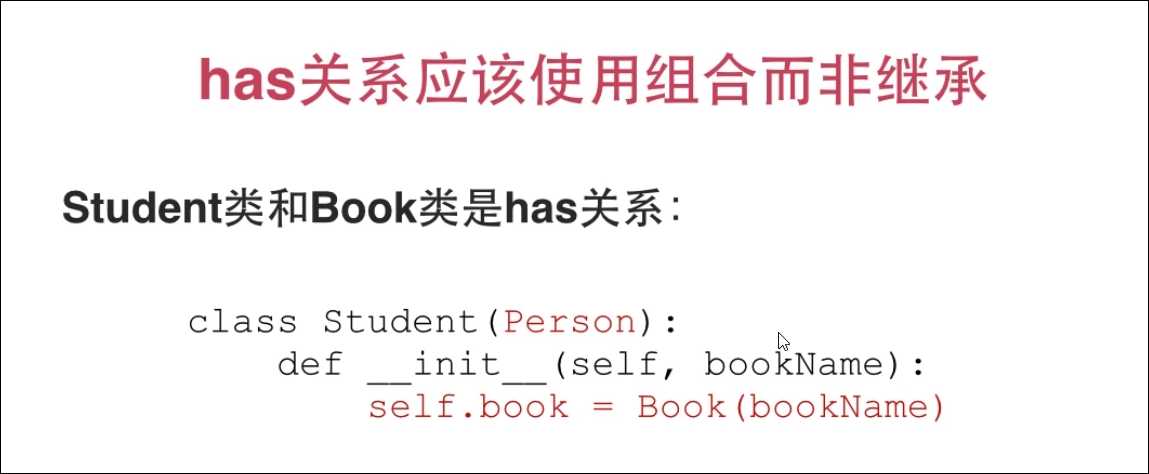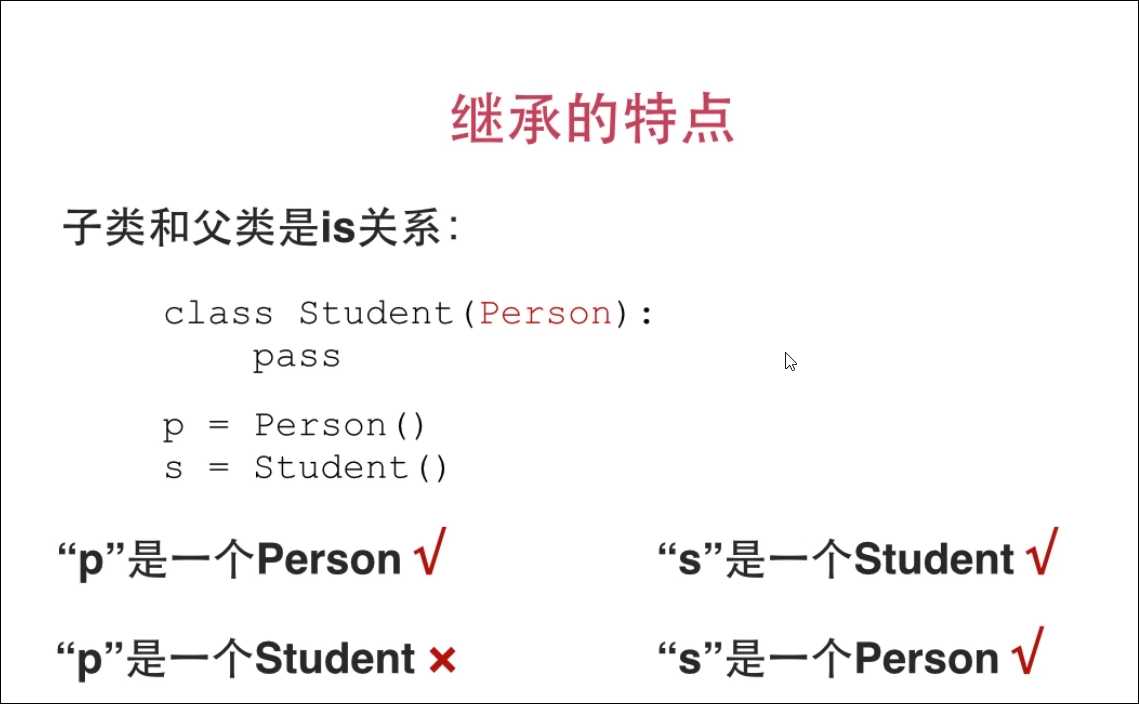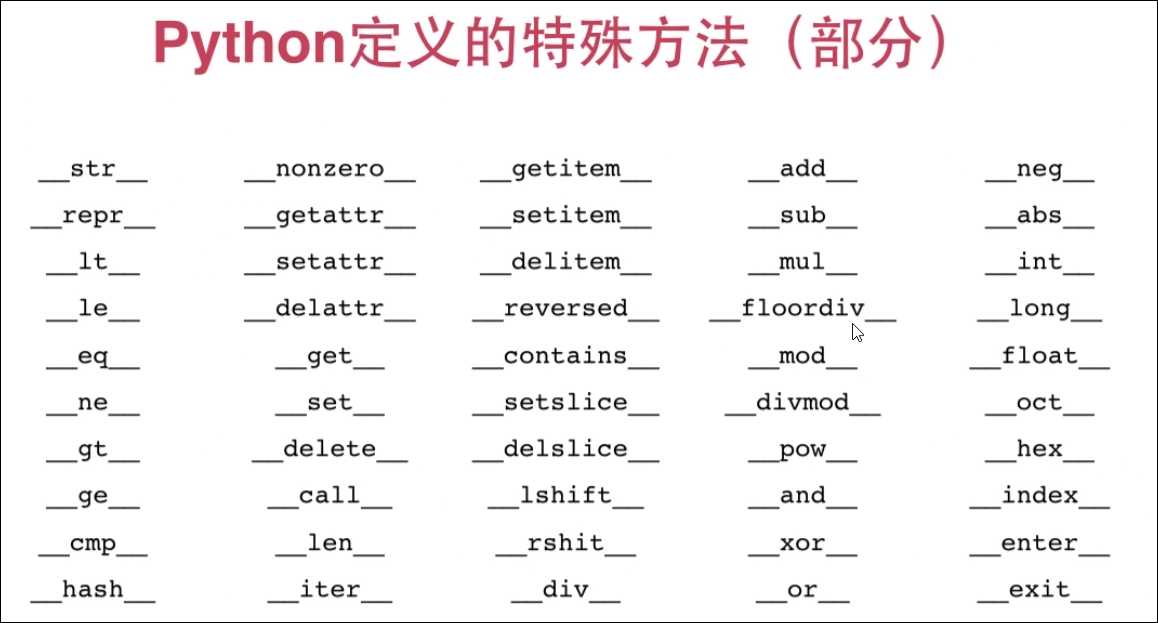标签:针对 student 排序 继承 获取 ima 包装 读取 pytho
1. python json.dumps() json.dump()的区别
注意cat ,是直接输出文件的内容
load和loads都是实现“反序列化”,区别在于(以Python为例):
loads针对内存对象,即将Python内置数据序列化为字串
如使用json.dumps序列化的对象d_json=json.dumps({‘a‘:1, ‘b‘:2}),在这里d_json是一个字串‘{"b": 2, "a": 1}‘
d=json.loads(d_json) #{ b": 2, "a": 1},使用load重新反序列化为dict
load针对文件句柄
如本地有一个json文件a.json则可以d=json.load(open(‘a.json‘))
相应的,dump就是将内置类型序列化为json对象后写入文件
2. sorted和sort
sorted(iterable, cmp=None, key=None, reverse=False)
3. 请定义Person类的__init__方法,除了接受 name、gender 和 birth 外,还可接受任意关键字参数,并把他们都作为属性赋值给实例。
class Person(object): def __init__(self,name,gender,birth,**kw): self.name = name self.gender = gender self.birth = birth for key,value in kw.items(): setattr(self,key,value) xiaoming = Person(‘Xiao Ming‘, ‘Male‘, ‘1990-1-1‘, job=‘Student‘) print xiaoming.name print xiaoming.job
34 请给 Person 类添加一个类属性 count,每创建一个实例,count 属性就加 1,这样就可以统计出一共创建了多少个 Person 的实例。
class Person(object): count = 0 def __init__(self,name): self.name = name Person.count += 1 p1 = Person(‘Bob‘) print Person.count p2 = Person(‘Alice‘) print Person.count p3 = Person(‘Tim‘) print Person.count
5. 类的私有变量不可以直接获取,但可以用方法实例或者类私有方法获取
# 通过实例的方法获取 class Person(object): __count = 0 def __init__(self,name): self.name = name Person.__count += 1 def get_count(self): return Person.__count p1 = Person(‘Alice‘) p2 = Person(‘Tom‘) print p1.get_count() # => 2 # 通过类私有方法获取 class Person(object): __count = 0 def __init__(self,name): self.name = name Person.__count += 1 @classmethod def get_count(self): return self.__count p1 = Person(‘Alice‘) p2 = Person(‘Tom‘) print Person.get_count() # => 2
6. 类的继承和组合
每个类的定义都需要继承,没有的话,就从object继承
6.1 组合:has关系

6.2 继承:is关系

示例:
class Person(object): def __init__(self, name, gender): self.name = name self.gender = gender class Teacher(Person): def __init__(self, name, gender, course): super(Teacher,self).__init__(name,gender) #或者Person.__init__(self,name,gender) self.course = course
7. python中多态
类具有继承关系,并且子类类型可以向上转型看做父类类型,如果我们从 Person 派生出 Student和Teacher ,并都写了一个 whoAmI() 方法:
class Person(object): def __init__(self, name, gender): self.name = name self.gender = gender def whoAmI(self): return ‘I am a Person, my name is %s‘ % self.name class Student(Person): def __init__(self, name, gender, score): super(Student, self).__init__(name, gender) self.score = score def whoAmI(self): return ‘I am a Student, my name is %s‘ % self.name class Teacher(Person): def __init__(self, name, gender, course): super(Teacher, self).__init__(name, gender) self.course = course def whoAmI(self): return ‘I am a Teacher, my name is %s‘ % self.name
在一个函数中,如果我们接收一个变量 x,则无论该 x 是 Person、Student还是 Teacher,都可以正确打印出结果:
def who_am_i(x): print x.whoAmI() p = Person(‘Tim‘, ‘Male‘) s = Student(‘Bob‘, ‘Male‘, 88) t = Teacher(‘Alice‘, ‘Female‘, ‘English‘) who_am_i(p) who_am_i(s) who_am_i(t) 运行结果: I am a Person, my name is Tim I am a Student, my name is Bob I am a Teacher, my name is Alice
这种行为称为多态。也就是说,方法调用将作用在 x 的实际类型上。s 是Student类型,它实际上拥有自己的 whoAmI()方法以及从 Person继承的 whoAmI方法,但调用 s.whoAmI()总是先查找它自身的定义,如果没有定义,则顺着继承链向上查找,直到在某个父类中找到为止。
由于Python是动态语言,所以,传递给函数 who_am_i(x)的参数 x 不一定是 Person 或 Person 的子类型。任何数据类型的实例都可以,只要它有一个whoAmI()的方法即可:
class Book(object): def whoAmI(self): return ‘I am a book‘
这是动态语言和静态语言(例如Java)最大的差别之一。动态语言调用实例方法,不检查类型,只要方法存在,参数正确,就可以调用。
Python提供了open()函数来打开一个磁盘文件,并返回 File 对象。File对象有一个read()方法可以读取文件内容:
例如,从文件读取内容并解析为JSON结果:
import json f = open(‘/path/to/file.json‘, ‘r‘) print json.load(f)
由于Python的动态特性,json.load()并不一定要从一个File对象读取内容。任何对象,只要有read()方法,就称为File-like Object,都可以传给json.load()。
请尝试编写一个File-like Object,把一个字符串 r‘["Tim", "Bob", "Alice"]‘包装成 File-like Object 并由 json.load() 解析。
import json class Students(object): def read(self): return ‘["Tim", "Bob", "Alice"]‘ s = Students() print json.load(s)
8. python 类的特殊方法

需要说明的是,对于单纯的数字可以用内建的cmp()函数进行sorted()
但如果不是单纯数字或者不是单纯字母,我们就需要自己定义__cmp__()
定义的__cmp__() 函数里面,可以使用cmp()进行优选排序,cmp()是升序,-cmp()是降序
示例
class Student(object): def __init__(self, name, score): self.name = name self.score = score def __str__(self): return ‘(%s: %s)‘ % (self.name, self.score) __repr__ = __str__ def __cmp__(self, s): if self.score == s.score: return cmp(self.name,s.name) return -cmp(self.score,s.score) L = [Student(‘Tim‘, 99), Student(‘Bob‘, 88), Student(‘Alice‘, 99)] print sorted(L) #返回结果:[(Alice: 99), (Tim: 99), (Bob: 88)]
标签:针对 student 排序 继承 获取 ima 包装 读取 pytho
原文地址:http://www.cnblogs.com/wongbingming/p/6847769.html